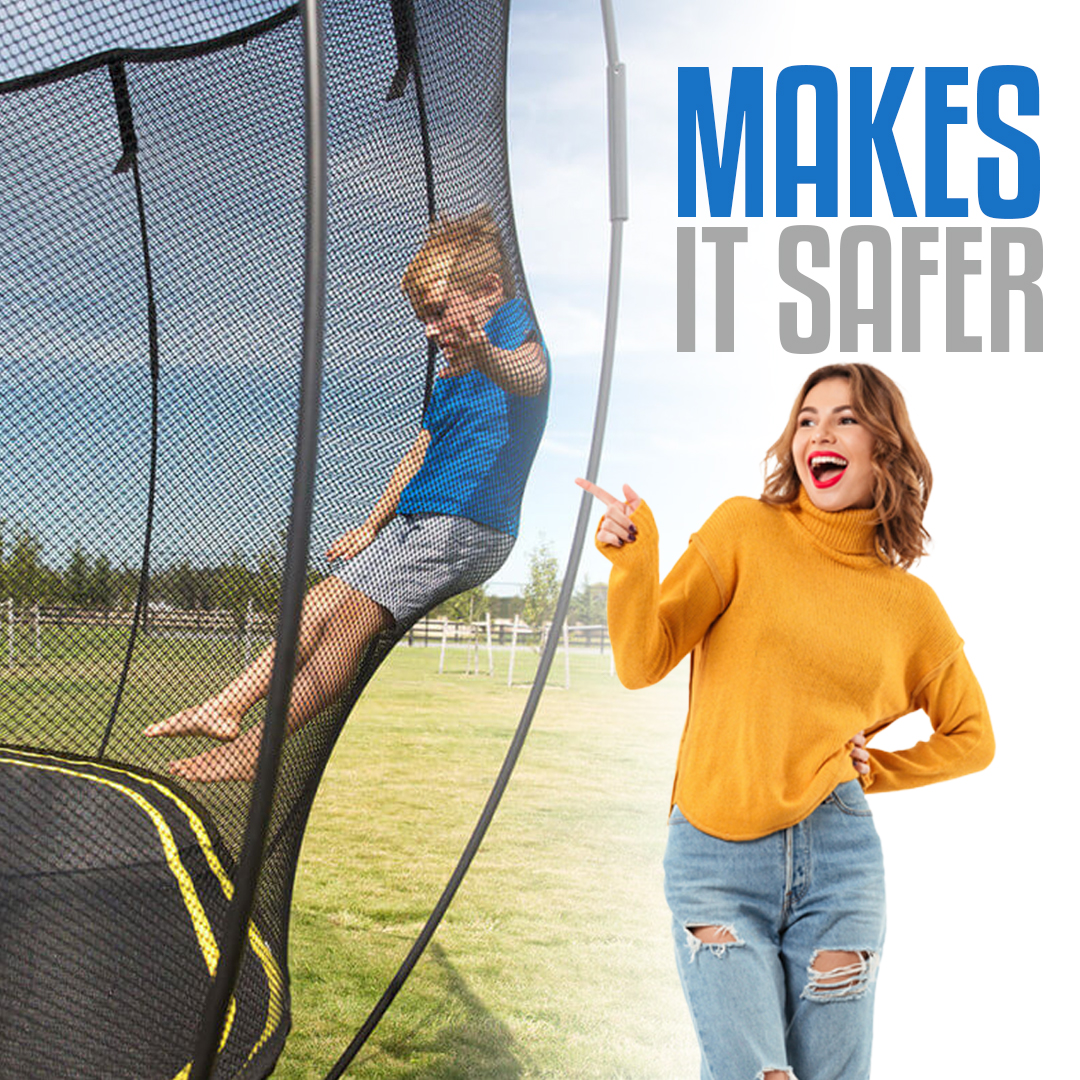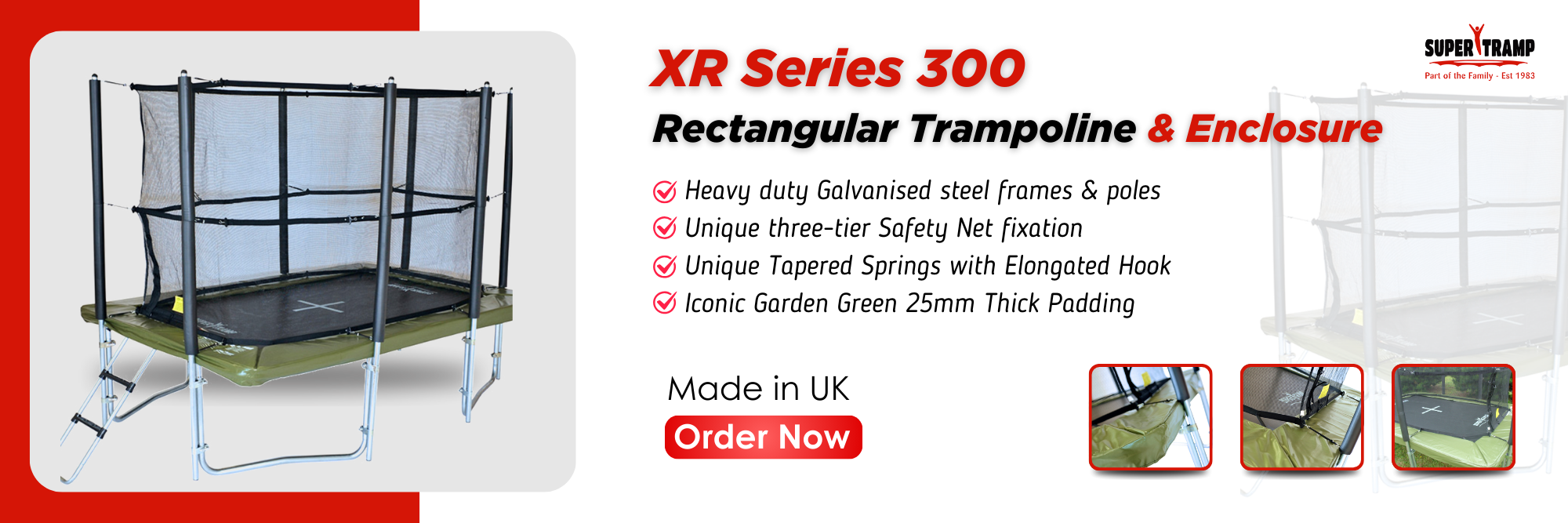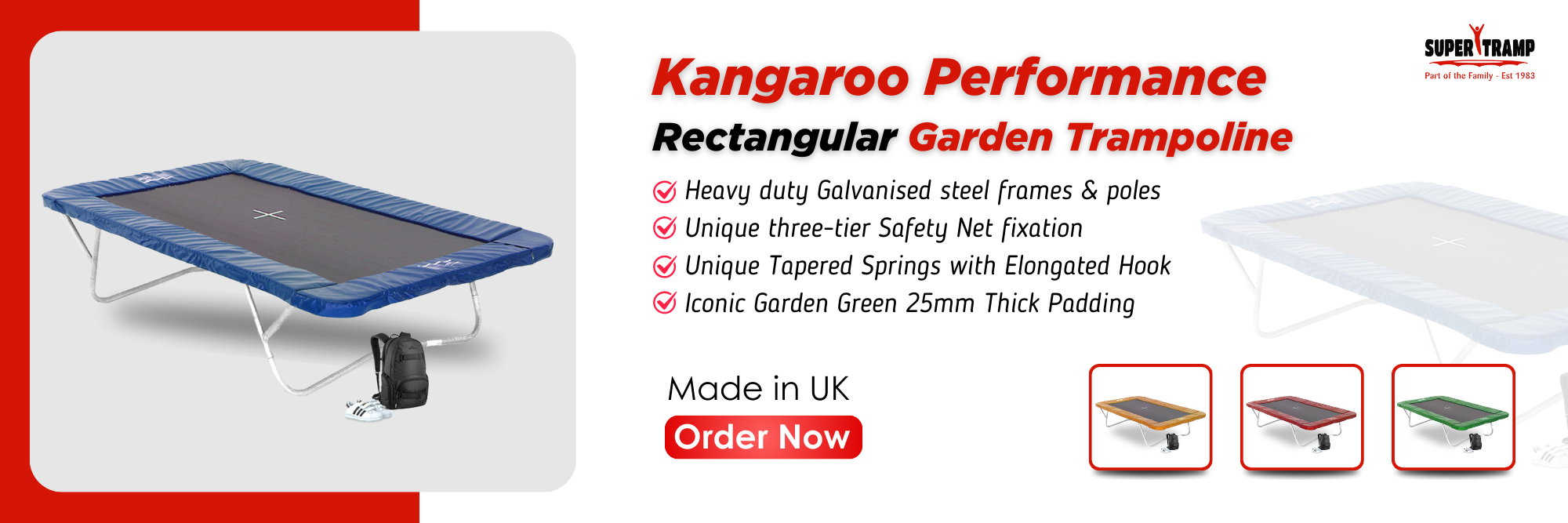You know that feeling when your children ask for a trampoline? They’ll get plenty of exercise and fresh air, learn new skills, and make memories with friends. But then the worrying starts. What if you fall off the edge?
Table of Contents
ToggleA safety net is necessary to give you peace of mind and keep your little ones protected while they’re bounced around. Properly installed, a net can prevent falls from the trampoline and reduce the risk of trampoline-related accidents by up to 90%.
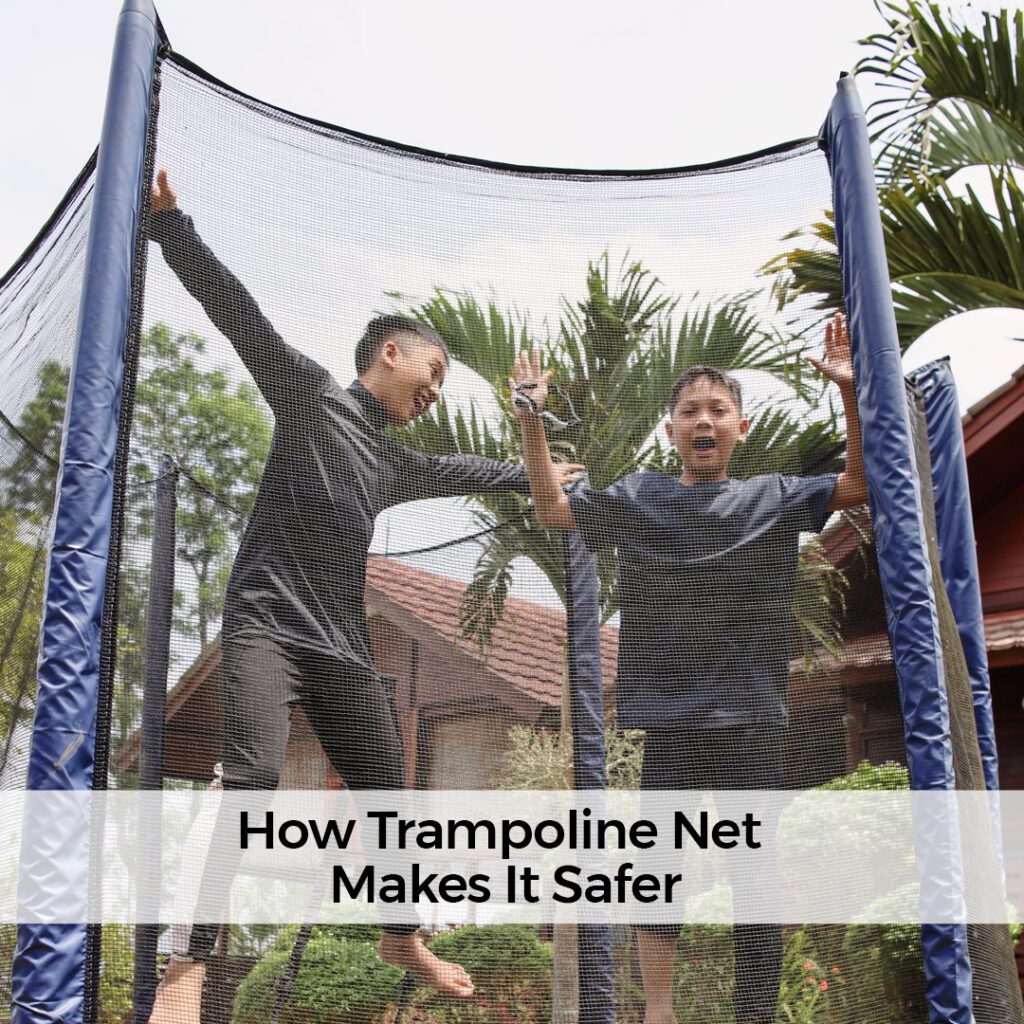
You’ll gain so much for a relatively small cost—your children get to have fun and adventure while staying safe from harm. What’s better than that?
The Dangers of Trampolines without Safety Nets
- Trampolines can be great fun for children, but without safety nets, they also pose serious risks. Thousands of children are injured on trampolines each year, and nets can prevent many of these accidents.
- Falls from the trampoline are a significant hazard. Children can quickly lose their balance or get bounced off the edge, suffering broken bones, head injuries, and other trauma. Safety nets securely attached around the perimeter of the trampoline can catch children before they hit the ground.
- Collision injuries are also common, as multiple children jumping at once can crash into each other. Only one child should be allowed to prevent this. Nets prevent children from falling on top of one another, reducing the chance of fractures, sprains, and knocks.
- Entrapment in the springs and pads beneath the trampoline is another risk, where limbs and hair can get caught. Safety pads and nets over the springs prevent access to these areas altogether.
- For the safety of your little ones, a trampoline net should be considered essential equipment, not an optional extra. They don’t have to cost a lot but can prevent injuries that often result in expensive medical bills and time off school or work. The peace of mind they provide to parents and caregivers is invaluable.
Every performance trampoline owner wants children to have fun while also staying safe. Adding safety nets and following some basic precautions can help ensure your trampoline provides children with years of enjoyment and adventure without the danger of serious harm. Their safety is worth the investment.
How Do Trampoline Safety Nets Work?

- Trampoline net surrounds the jumping surface and attaches to the trampoline frame, preventing children and toys from falling off the trampoline. They’re a must-have for any family with small children.
- Safety nets are a robust, flexible mesh material that catches jumpers and toys before hitting the ground. Most attach to the trampoline frame with straps and buckles, so you can easily take them on and off. The netting gently cushions impacts, protecting jumpers from injury.
- Safety nets surround the entire jumping surface, overlapping at the entrance. This prevents gaps where children or toys could slip through.
- The net attaches securely at multiple points around the frame to keep the net taut and prevent sagging.
- Properly installed nets don’t affect the bounce or feel of the trampoline. Children can still jump freely without noticing the net.
- Nets come in different sizes to fit all trampoline shapes and sizes. Look for a net designed explicitly for your trampoline model.
With a quality safety net installed, you can feel at ease knowing your little ones will stay safely contained on the trampoline. They give children the freedom to bounce without constant supervision while minimising the risk of falls, collisions, and injuries. A safety net is the most essential accessory you can buy if you have a trampoline.
Trampoline Net Features to Look For
A quality trampoline net is essential to keep children safe on the rectangle trampoline. Here are some key features to consider when choosing a trampoline safety net:
Properly sized for your trampoline
The net should extend over the edges of the trampoline mat by at least 5 to 8 feet to prevent falls. Measure your trampoline and choose a net specifically designed for that size. An improperly sized net will only provide partial protection.
Strong, durable material
Look for a net made of high-density polyethylene or polypropylene mesh. These rugged materials can withstand weather, UV rays, and high impacts. Avoid nets with large mesh openings, as little fingers and toes can get trapped. Stronger nets may cost a bit more but will last much longer and provide superior safety.
Securely attaches to the trampoline frame
The net should attach securely around the trampoline frame, preferably with a strong rope or cord. This prevents the net from sagging or drooping, which could allow falls through gaps. Some nets use metal clamps to securely fasten them to the frame. Avoid nets that rely on elastic or bungee cords, as these can become loose over time.
Has an entrance with a secure closure
A zippered entrance in the net allows easy access to the trampoline but needs a sturdy closure to prevent falls. Look for a heavy-duty zipper at least 8 to 10 inches long and secure straps or Velcro closures over the zipper flap. This deters little ones from opening and closing the entrance unsupervised.
Meets or exceeds safety standards
Reputable brands will clearly state that their trampoline nets meet official safety standards. These standards help ensure the netting is made of appropriate materials and is appropriately designed to prevent injuries. Only settle for a net with stated safety certifications.
Your children’s safety depends on choosing a high-quality trampoline net with the right features. Be willing to invest in a net that will provide peace of mind and many years of safe jumping fun.
Installing a Trampoline Safety Net
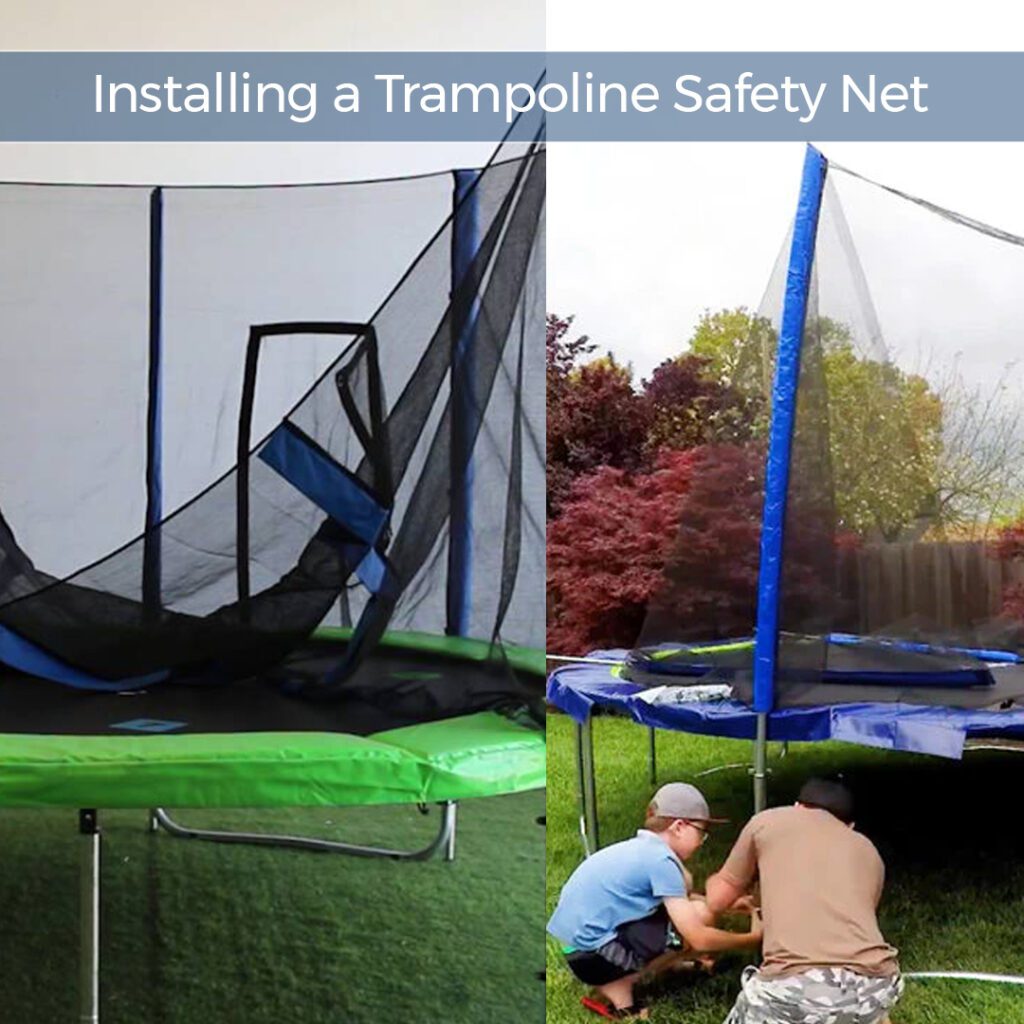
Installing a trampoline safety net is straightforward, but you may need an extra set of hands to help attach it securely. Follow the instructions provided for your specific trampoline and net. In general, you’ll want to:
- Lay the net around the garden trampoline’s edge to check the fit before attaching it. The trampoline net should be pulled taut but still have some give.
- Attach the net to the trampoline frame using straps, ropes, hooks, or springs. Secure all points of contact to prevent sagging.
- Ensure the entrance to the net has a sturdy zipper or Velcro closure to prevent falls but is still easily opened and closed.
- Test the net to ensure it’s secure, evenly, and snugly attached before allowing children to jump.
- Inspect the net regularly for any damage or tears and replace it as needed. Safety nets should be replaced every 2–5 years, depending on use and condition.
Trampoline safety nets are an investment in your children’s security and your own peace of mind. Take the time to install a high-quality net explicitly designed for your trampoline and ensure it’s properly maintained. The added safety it provides will give you confidence your children can enjoy this fun activity worry-free.
Teaching Children Safe Trampoline Usage

Teaching children how to properly and safely use a trampoline is extremely important. As a parent, you must always set clear rules and closely supervise them.
Set Clear Rules
Lay down some ground rules before allowing children on the trampoline. Only one child is allowed to bounce at a time. No rough play, pushing or pulling each other. Only somersaults or flips with proper training. Always jump in the centre of the mat, away from the springs and frame. Only children of similar size and age should jump together. These rules will help prevent injuries from collisions, falls, and getting limbs caught.
Closely Supervise
Never leave children unsupervised on a trampoline. Watch them at all times to ensure rules are followed. You need to be present to spot them in case they lose balance or land incorrectly after a jump. Supervision lets you control how many children are on at once and determine when they’ve had enough. Even with safety trampoline nets and padding, trampolines can be dangerous if children are left unattended.
Set Time Limits
Limit the time children spend jumping to prevent fatigue and reckless behaviour. Start with 10-15 minutes at a time, a few times a week. Make sure children take breaks in between to rest and rehydrate. You can gradually increase the time as they get older and more experienced. But even for teens, 30-45 minutes at a time is plenty.
Enforce Proper Landing Position
The key to safe trampolining is landing properly after each bounce. Teach children to land with knees slightly bent, back straight, and arms out to help balance. Have them practice the proper position before starting to jump. Remind them after each bounce to ensure it becomes second nature. Landing correctly will prevent strains, sprains, and fractures from awkward landings.
Following these tips and taking an active role in trampoline safety education will allow children to have fun while avoiding unnecessary risks. With your guidance, children of any age can bounce confidently and responsibly.
Conclusion
So there you have it; as much as trampolines are a fun recreational activity for children and families, they can also be dangerous if the proper safety precautions aren’t taken. Investing in a high-quality trampoline net is one of the easiest ways to avoid injury and ensure your little ones can bounce to their heart’s content. The next time you see those adorable faces begging you to go outside and jump, you’ll have peace of mind knowing the safety net has them covered. While the thrill of soaring high and mastering new tricks is part of childhood, broken bones and emergency room visits certainly don’t have to be.
FAQ's
Is it safe to use a trampoline without a net?
No, using a trampoline without a net poses a safety risk. The net provides essential protection, preventing falls and ensuring a secure environment. Always use a trampoline with its accompanying safety net.
Why do trampolines have nets?
Trampolines have nets to enhance safety by preventing users from falling off during bouncing. The net is a crucial barrier, reducing the risk of injuries and providing added security during recreational use.
How do I know if my trampoline is safe?
Ensure trampoline safety by regularly inspecting for damaged parts, including the frame, mat, and springs. Confirm the enclosure is intact, and follow the manufacturer’s maintenance guidelines for optimal safety and longevity.
Can you replace the net on a trampoline?
Yes, you can replace the net on a trampoline. Ensure compatibility with your trampoline model, and follow the manufacturer’s instructions carefully. Regularly check for wear and tear and promptly replace damaged nets to maintain safety.
How long do trampoline nets last?
Trampoline nets typically last 3 to 5 years, depending on usage and weather exposure. Regularly inspect for signs of wear, such as tears or stretching, and replace the net as needed to ensure continued safety and performance.

